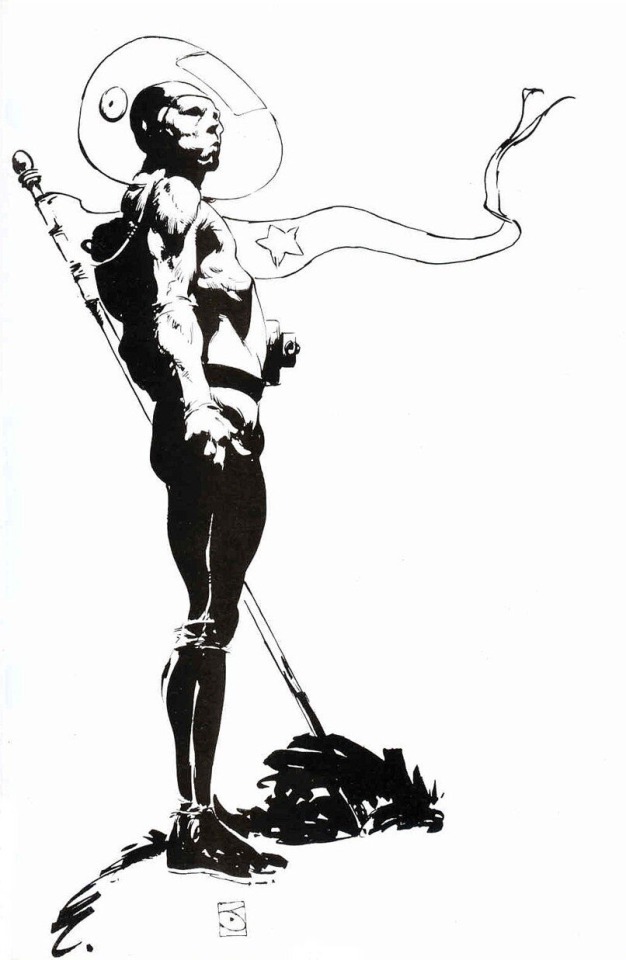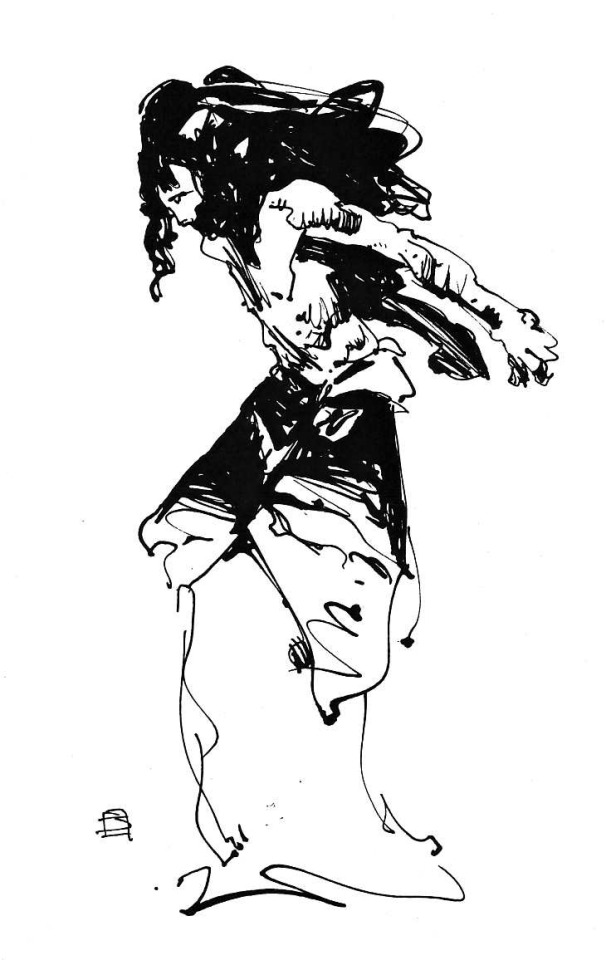I want you to understand what it is like to live in Chicago during this time.
Every day my phone buzzes. It is a neighborhood group: four people were
kidnapped at the corner drugstore. A friend a mile away sends a Slack message:
she was at the scene when masked men assaulted and abducted two people on the
street. A plumber working on my pipes is distraught, and I find out that two of his
employees were kidnapped that morning. A week later it happens again.
An email arrives. Agents with guns have chased a teacher into the school where she
works. They did not have a warrant. They dragged her away, ignoring her and her colleagues’ pleas to show proof of her documentation. That evening I stand a few feet from the parents of Rayito de Sol and listen to them describe, with anguish, how good
Ms. Diana was to their children. What it is like to have strangers with guns
traumatize your
kids.
For a teacher to hide a three-year-old child for fear they might be
killed.
How their relatives will no longer leave the house. I hear the pain and fury in
their voices, and I wonder who will be next.
Understand what it is to pray in Chicago. On September 19th, Reverend David Black, lead pastor at First Presbyterian Church of Chicago, was praying outside the ICE detention center in Broadview when a DHS agent shot him in the head with pepper balls. Pepper balls are never supposed to be fired at the head because they can seriously injure, or even kill. “We could hear them laughing as they were shooting us from the roof,” Black recalled. He is not the only member of the clergy ICE has assaulted. Methodist pastor Hannah Kardon was violently arrested on October 17th, and Baptist pastor Michael Woolf was shot with pepper balls on November 1st.
Understand what it is to sleep in Chicago. On the night of September
30th,
federal agents rappelled from a Black Hawk helicopter to execute a raid on an apartment
building on the South Shore. Roughly three hundred agents deployed flashbangs,
busted down doors, and took people indiscriminately. US citizens—some women and children—were grabbed from their beds, marched outside without even a chance to dress, zip-tied, and loaded into
vans. Residents returned to find
their windows and doors broken and their belongings
stolen. Despite the violence of the raid, it appears no criminal charges were filed.
Understand what it is to lead Chicago. On October 3rd, Alderperson Jesse Fuentes asked federal agents to produce a judicial warrant and allow an injured man at the hospital access to an attorney. The plainclothes agents grabbed Fuentes, handcuffed her, and took her outside the building. Her lawsuit is ongoing. On October 21st, Representative Hoan Huynh was going door-to-door to inform businesses of their immigration rights when he was attacked by six armed CBP agents, who boxed in his vehicle and pointed a gun at his face. Huynh says the agents tried to bash open his car window.
Understand what it is to live in Chicago. On October 9th, Judge Ellis issued a temporary restraining
order
requiring that federal agents refrain from deploying tear gas or shooting
civilians without an imminent threat, and requiring two audible warnings. ICE
and CBP have flouted these court orders. On October 12th, federal agents
shoved an attorney to the
ground
who tried to help a man being detained in Albany Park. Agents refused to
identify themselves or produce a warrant, then deployed tear gas without
warning. On October 14th, agents rammed a car on the East Side, then
tear-gassed neighbors and
police.
On October 23rd, federal agents detained seven
people,
including two U.S. citizens and an asylum seeker, in Little Village. Two worked
for Alderperson Michael Rodriguez: his chief of staff Elianne Bahena, and
police district council member Jacqueline Lopez. Again in Little Village, agents tear-gassed and pepper-sprayed protestors, seizing two high school students and a security guard, among others. Alderperson Byron Sigcho-Lopez reported that agents assaulted one of the students, who had blood on his face. On October 24th, agents in
Lakeview emerged from unmarked cars, climbed a locked fence to enter a
private yard, and kidnapped a construction
worker.
As neighbors gathered, they deployed four tear gas canisters. That same day, a few blocks away,
men with rifles jumped out of SUVs and assaulted a man standing at a bus
stop.
“They were beating him,” said neighbor Hannah Safter. “His face was bleeding”.
They returned minutes later and attacked again. A man from the Laugh Factory, a
local comedy club, had come outside with his mother and sister. “His mom put
her body in between them, and one of the agents kicked her in the face”.
Understand what it is to be a family in Chicago. On October 25th, agents
arrested a 70-year-old man and threw a 67-year old woman to the
ground in Old Irving Park, then deployed tear gas, disrupting a children’s Halloween parade. One parent spoke to NBC news about her two-year-old child’s response to the gas. The same day, agents deployed tear gas against residents of Avondale.
“Kids dressed in Halloween costumes walking to a parade do not pose an immediate threat to the safety of a law enforcement officer. They just don’t. And you can’t use riot control weapons against them,” Judge Ellis said to Border Patrol chief Gregory Bovino.
Understand how the government speaks about Chicago. On November 3rd, paralegal Dayanne Figueroa, a US citizen, was driving to work when federal agents crashed into her car, drew their guns, and dragged her from the vehicle. Her car was left behind, coffee still in the cup holder, keys still in the car. The Department of Homeland Security blamed her, claiming she “violently resisted arrest, injuring two officers.” You can watch the video for yourself.
“All uses of force have been more than exemplary,” Bovino stated in a recent deposition. He is, as Judge Ellis put it, lying. Bovino personally threw a tear gas canister in Little Village. He claimed in a sworn deposition that he was struck in the head by a rock before throwing the canister, and when videos showed no rock, admitted that he lied about the event. When shown video of himself tackling peaceful protestor Scott Blackburn, Bovino refused to acknowledge that he tackled the man. Instead, he claimed, “That’s not a reportable use of force. The use of force was against me.”
“I find the government’s evidence to be simply not credible,” said Judge Ellis in her November 6th ruling. “The use of force shocks the conscience.” The court’s November 20th opinion provides exhaustive evidence. “The BWC video shows that the protesters were simply standing there when agents first deployed any force,” Ellis writes. “DHS tried to claim protestors threw fireworks at agents… when the helicopter and BWC footage indicates that those explosions were instead agents’ flashbang grenades.” These stories go on and on. “It becomes difficult, if not impossible, to believe almost anything that Defendents represent.”
Understand what it is to be Chicago. To carry a whistle and have the ICIRR hotline in your phone. To wake up from nightmares of shouting militiamen and guns in your face. To rehearse every day how to calmly refuse entry, how to identify a judicial warrant, how to film and narrate an assault. To wake to helicopters buzzing your home, to feel your heart rate spike at the car horns your neighbors use to alert each other to ICE and CBP enforcement. To know that perhaps three thousand of your fellow Chicagoans have been disappeared by the government, but no one really knows for sure. To know that many of those seized were imprisoned a few miles away, as many as a hundred and fifty people in a cell, denied access to food, water, sanitation, and legal representation. To know that many of these agents—masked, without badge numbers or body cams, and refusing to identify themselves—will never face justice. To wonder what they tell their children.
The masked thugs who attack my neighbors, who point guns at elected officials and shoot pastors with pepper balls, who tear-gas neighborhoods, terrify children, and drag teachers and alderpeople away in handcuffs are not unprecedented. We knew this was coming a year ago, when Trump promised mass deportations. We knew it was coming, and seventy-seven million of us voted for it anyway.
This weight presses on me every day. I am flooded with stories. There are so many I cannot remember them all; cannot keep straight who was gassed, beaten, abducted, or shot. I write to leave a record, to stare at the track of the tornado. I write to leave a warning. I write to call for help.
I want you to understand, regardless of your politics, the historical danger of a secret police. What happens when a militia is deployed in our neighborhoods and against our own people. Left unchecked their mandate will grow; the boundaries of acceptable identity and speech will shrink. I want you to think about elections in this future. I want you to understand that every issue you care about—any hope of participatory democracy—is downstream of this.
I want you to understand what it is to love Chicago. To see your neighbors make the heartbreaking choice between showing up for work or staying safe. To march two miles long, calling out: “This is what Chicago sounds like!” To see your representatives put their bodies on the line and their voices in the fight. To form patrols to walk kids safely to school. To join rapid-response networks to document and alert your neighbors to immigration attacks. For mutual aid networks to deliver groceries and buy out street vendors so they can go home safe. To see your local journalists take the federal government to court. To talk to neighbor after neighbor, friend after friend, and hear yes, yes, it’s all hands on deck.
I want you to understand Chicago.
This essay has been building—eating at me, really—for the last two months. My thanks to all the friends, family, neighbors and colleagues who have talked with me about ICE and CBP. In particular, I want to acknowledge the families of Rayito de Sol—parents like Maria Guzman and Tara Goodarzi, whose powerful speeches have been lodged in my chest. Also the members of One Northside, Aldermen Vasquez and Martin, Senator Simmons, and everyone who spoke at the rally Wednesday. Your call to “tell the story” caught me, and I hope I have done some small part of that work here.
I was particularly moved by Kelly Hayes’ In Chicago, We Run Toward Danger Together and Dan Sinker’s What I Need You To Understand, which inspired the core motif of this essay. His follow-up Ghosts in the Graveyard is also worth your time. Cam’s On Repacking Your Unpacked Funeral Clothes breaks my heart. Laurie Merrell’s Dispatch from Occupied Chicago is a lucid, reflective piece which mirrors my own feelings.
ICE and CBP affect us all: south, east, north and west; city and suburb. In particular, ICE has hit Little Village, a predominantly Latino neighborhood on the Southwest Side, hard in recent weeks. Marginalized communities especially deserve our focus and care.
You can donate your time and money to organizations like ICIRR, which connects immigrants and refugees with legal aid and social services. I also suggest a donation to the non-profit Block Club Chicago or Chicago Sun-Times, both of whom have been doing exceptional local journalism in this dark time. Without their reporting, this would have been impossible.













